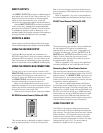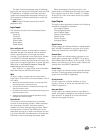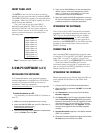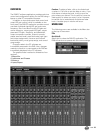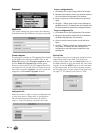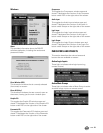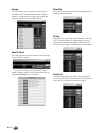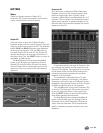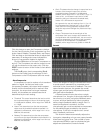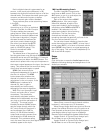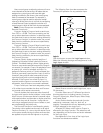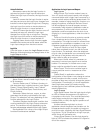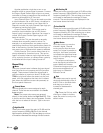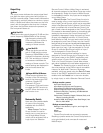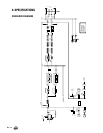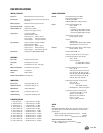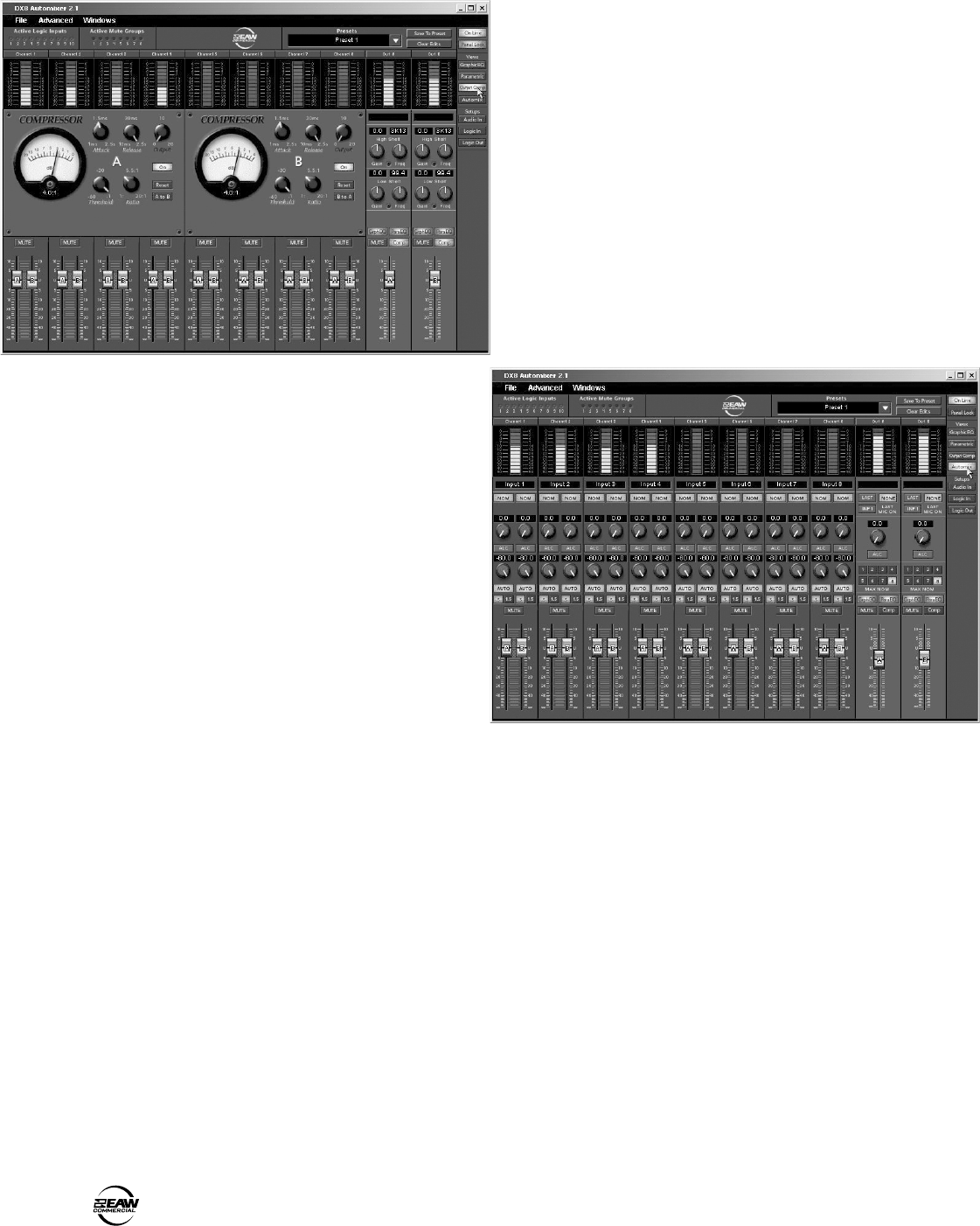
24 – DX8
Compress
•
Ratio:
This determines the change in output level as a
function of the change in input level, once the
threshold has been exceeded. It is calibrated in
decibels, with a range from 1:1 (off) to 20:1. Thus, if it
is set to 10:1, an increase in input level of 10 dB
(assuming the input is above the threshold level),
results in a 1 dB increase in output level.
As a general rule, use ratio settings from 1:1.5 to 1:5
for compressor use. Settings from 1:10 to 1:20 are
more useful for limiting purposes, because in that
range the output level changes very little as the input
increases.
•
Output:
This determines the overall gain of the
compressor from input to output (as measured with
the signal below the threshold level). You can use this
control to compensate for the loss of gain caused by
the action of the compressor. It is calibrated in
decibels, with a range from unity (0 dB) to +20.0 dB.
Automix
Click this button to open the Compressor window
for the A and B outputs. Each compressor has five
knobs: Attack, Release, Threshold, Ratio, and Output.
Click and drag on the individual knobs to adjust each
parameter. An analog-style meter indicates the
amount of compression applied in decibels.
Click the
ON
button to turn each Compressor on
and off. The Compressor can also be turned on and
off with the buttons on the output strip. Click the
RESET
button to return all the knobs to their default
settings.
The
A to B
button (and corresponding
B to A
button on the B side) copy the settings of the A
Compressor to the B Compressor (and vice versa).
About Compression:
A compressor is used to reduce or limit transient
peaks in a signal. As the input level to the
compressor increases, the output level increases
linearly until the threshold point is reached. After
that point, the output level no longer increases
linearly, but increases at a reduced rate that is
determined by the ratio setting.
•
Threshold
: This control determines the level at which
the compressor begins to act on the incoming signal.
It is calibrated in decibels, with a range from –60.0 dB
to –1.0 dB.
•
Attack
: This determines how fast the compressor
reacts once the threshold has been exceeded. It is
calibrated in milliseconds, with a range from 1 ms to
2500 ms (2.5 seconds).
•
Release:
This determines how fast the compressor
turns off once the signal falls below the threshold. It is
calibrated in milliseconds, with a range from 10 ms to
2500 ms (2.5 seconds).
One of the dangers of using a conventional mixer in
a sound system operated by an untrained sound
technician is the occurrence of feedback. The more
open channels there are, the greater the overall
system gain and the lower the potential acoustic
gain (gain before feedback).
A trained operator knows that when a single
microphone is on, the gain of the single channel can
be turned up to a point just before feedback starts
to occur, and then backed off a little to provide a
safety margin (feedback stability margin). But if a
second microphone is turned on, the first
microphone’s gain must be reduced to compensate
for the additional gain provided by the second
microphone. If the first microphone isn’t turned
down, feedback could occur.
The Automix feature automatically adjusts the
input gains, depending on how many open channels
there are at any given time. This number of open
microphones (NOM) is used to calculate the gain
adjustment (attenuation) for each channel.



